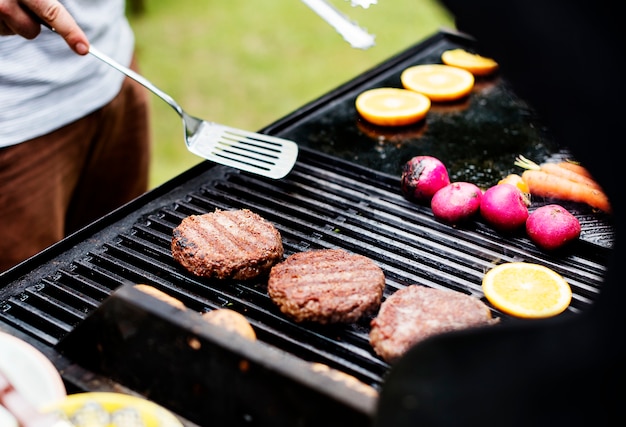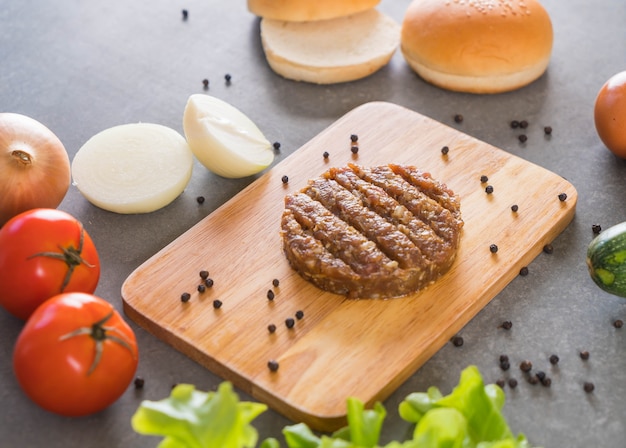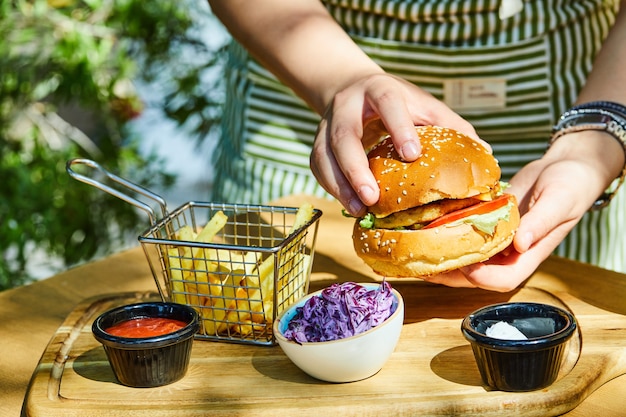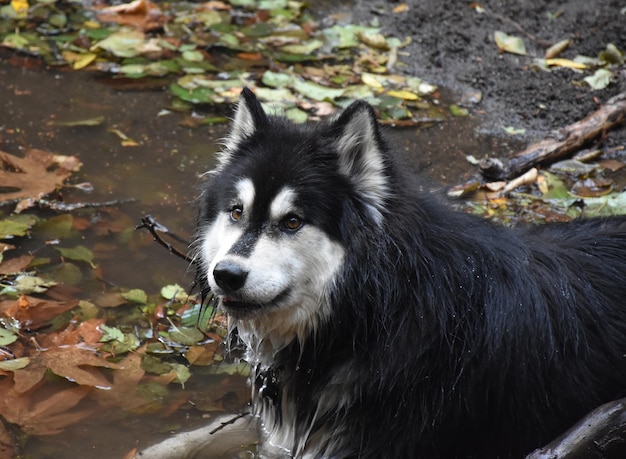Let’s be honest, nothing beats a juicy, flavour-packed burger cooked to perfection on a sizzling grill. But getting that perfect char, that melt-in-your-mouth tenderness, and that irresistible crispy crust takes more than just throwing a patty on the heat. It’s all about finding the right temperature – that Goldilocks zone that ensures a burger that’s not too cooked, not too raw, but just right.
(Part 1)
My Burger Odyssey: A Journey of Trial and Error

My love for burgers is deep-rooted. For years, I've been on a quest to find the ultimate burger, trying every burger joint in town, experimenting with different recipes, and diving deep into the world of grilling techniques. Through all these trials and tribulations, I've learned a thing or two about the importance of grill temperature.
The Early Days of Burger Blunders
We’ve all been there, right? Those early attempts at grilling burgers where we were clueless about the power of heat. I’d throw patties on a cold grill, hoping for the best, only to end up with pale, flavourless discs stuck to the grates. Then there were the times I cranked up the heat, convinced that more heat equals a better burger. Big mistake! The outside would be burnt to a crisp, while the inside remained raw, creating an unappetizing mess.
Finding the Light at the End of the Grill
Determined to conquer the burger grilling game, I delved into serious research, exploring the different types of grills, heat zones, and temperature control techniques. I even took a grilling class, which was an absolute game-changer. And it all boiled down to one crucial element: the temperature.
Unveiling the Science Behind the perfect burger

You might think grilling a burger is just about slapping it on the grill and waiting. But, there’s a science behind creating those delectable flavours and textures. Temperature plays a crucial role in triggering chemical reactions that transform a simple patty into a culinary masterpiece.
The Maillard Reaction: The Magic of Browning
You’ve probably heard about the Maillard reaction – that magical process where proteins and sugars interact at high temperatures, resulting in those enticing brown hues and crispy textures. It’s the key to that irresistible crust that makes a grilled burger so irresistible.
Fat Rendering: Unleashing the Juices
Heat also helps render the fat in the burger, melting it down to create a juicy, flavourful patty. However, if you cook it too hot, the fat can burn before it has a chance to render, leaving you with a dry, tough burger.
Protein Coagulation: From Tender to Firm
Heat also influences the protein in the meat. As it cooks, the protein coagulates, creating a firmer texture. But, too much heat can lead to overcooked protein, resulting in a dry, rubbery patty.
Finding the Sweet Spot: The Goldilocks Zone of Grill Temperatures

So, what’s the perfect grill temperature for a juicy burger? It’s about finding a delicate balance, enough heat to achieve that delicious sear and render the fat without burning the outside or overcooking the inside.
The Perfect Heat Zone: 350°F to 400°F (175°C to 200°C)
Think of it as the Goldilocks zone: not too hot, not too cold, but just right. For most gas grills, the ideal temperature range is between 350°F (175°C) and 400°F (200°C).
Temperature Variations: Adapting to Your Grill and Preferences
However, there are a few exceptions. If you're using a charcoal grill, you'll need a bit more heat, around 450°F (230°C). And if you're grilling a thinner burger, you can lower the temperature slightly to around 325°F (160°C).
Choosing the Right Method: A Recipe for Success
Ultimately, there’s no one-size-fits-all answer. The ideal temperature depends on your grill type, desired level of doneness, and the thickness of your burger. However, a general rule of thumb is to use medium-high heat for a juicy, flavourful burger with a nice sear.
The Art of Grilling: Mastering the Burger-Making Process
Now that we’ve established the importance of temperature, let’s dive into the actual grilling process. Here’s my take on how to grill a burger like a seasoned pro.
Preparation: The Foundation for a delicious burger
Before you even think about firing up the grill, take some time to prep your patties. Form them into even-sized patties, about 1-inch thick. Season them generously with salt and pepper, and don’t be afraid to add a touch of your favourite seasonings. A pinch of smoked paprika, for example, adds a beautiful depth of flavour.
The First Flip: Building a Perfect Crust
Once your grill is heated to the desired temperature, place your patties on the grates, giving them some space to breathe. Let the burgers cook undisturbed for about 4-5 minutes per side, allowing that delicious sear to develop.
The Second Flip: The Turning Point
After the first flip, gently lift the burger with a spatula to check for that beautiful browning and slight crispiness. If not, give it another minute or two.
Checking for Doneness: The Thermometer Tells All
Now it’s time to check for doneness. The easiest way is to use a meat thermometer. For a medium-rare burger, aim for an internal temperature of 130°F (55°C). For medium, it’s 140°F (60°C), and for well-done, it’s 160°F (70°C).
The Finishing Touches: Resting for Juiciness
Once your burger is cooked to perfection, remove it from the grill and let it rest for a few minutes before assembling your masterpiece. This allows the juices to redistribute, resulting in a more juicy and flavourful burger.
(Part 2)
Grill Types and Temperatures: Adapting to Different cooking styles
Let's talk about the different types of grills and how to adjust the temperature for each one.
Gas Grills: The User-Friendly Option
Gas grills are generally easier to control the temperature. They typically have multiple burners, which allow you to create different heat zones. For burgers, you'll want to use medium-high heat, which is about 350°F (175°C) to 400°F (200°C).
Charcoal Grills: The Smoky Flavour Master
Charcoal grills offer a more smoky flavour but can be a bit more challenging to control the temperature. You'll need to adjust the airflow and the amount of charcoal to achieve the desired heat. For burgers, aim for a temperature of around 450°F (230°C).
pellet grills: The Precision King
Pellet grills are becoming increasingly popular due to their precise temperature control and consistent smoky flavour. You can set the temperature on a pellet grill, and it will maintain that temperature throughout the cooking process. For burgers, you can use a temperature of around 375°F (190°C).
Grill Maintenance and Safety: Keeping Your Grilling Game Strong
We've got the temperature down, the grilling process is smooth sailing, but let’s not forget about grill maintenance and safety.
Cleaning the Grill: A Clean Grill is a Happy Grill
Before you start grilling, give your grill a quick clean. Scrape off any leftover food debris with a grill brush to prevent food from sticking and ensure a more even cooking surface. And don’t forget to clean the grill grates after you’re done grilling.
Safety First: Prioritizing Safety When Handling Heat
Always remember safety first when grilling. Use heat-resistant gloves to protect your hands, keep a fire extinguisher nearby just in case, and never leave the grill unattended, especially if there’s an open flame.
FAQs: Answering Your Most Pressing Burger Questions
What’s the best way to determine if a burger is cooked to the desired doneness?
The most reliable way to check the doneness of a burger is to use a meat thermometer. Insert the thermometer into the thickest part of the patty, but avoid touching the bone. For a medium-rare burger, aim for an internal temperature of 130°F (55°C). For medium, it’s 140°F (60°C), and for well-done, it’s 160°F (70°C).
How can I prevent my burgers from sticking to the grill?
The key to preventing burgers from sticking is to make sure the grill is hot enough. Also, use a grill brush to clean the grates before grilling. And don’t overcrowd the grill. Give the burgers some space to breathe.
What are some good toppings for a burger?
The best toppings for a burger are a matter of personal preference, but some popular choices include lettuce, tomato, onion, cheese, bacon, pickles, and mayonnaise. I like to add a bit of caramelized onions for a touch of sweetness.
What are some tips for making juicy burgers?
Here are a few tips for making juicy burgers:
- Use high-quality ground beef. Look for a blend with a higher fat content.
- Don’t overwork the meat. Just gently shape it into patties.
- Season generously with salt and pepper.
- Let the burgers rest for a few minutes before serving.
How do I tell if my grill is hot enough?
There are a few ways to tell if your grill is hot enough. If you have a gas grill, the burners should be set to medium-high heat. If you have a charcoal grill, you should see a layer of white-hot coals. And if you have a pellet grill, the temperature should be set to the desired temperature.
I hope this guide has armed you with the knowledge and confidence to master the perfect grilled burger. Remember, every burger is a journey, and yours will be just as delicious as you make it. Happy grilling, everyone!
Everyone is watching

How to Cook Frozen Lobster Tails Perfectly: A Step-by-Step Guide
RecipesLobster. Just the word conjures up images of lavish meals, special occasions, and a taste of luxury. But let's...

Pigs in a Blanket Cooking Time: How Long to Bake for Perfect Results
RecipesAh, pigs in a blanket. Just the name conjures up images of those delightful little parcels of crispy pastry en...

Pork Fillet Cooking Time: How Long to Cook It Perfectly
RecipesPork fillet, or tenderloin as it's sometimes called, is a real favourite in our house. It's so versatile, and...

The Ultimate Guide to Cooking Delicious Frankfurters
RecipesLet's face it, we all love a good frankfurter. It's a classic, simple, and always satisfying. But let's be rea...

Wolf Meat Recipes: A Guide to Cooking Wild Game
RecipesLet's be honest, you don't see wolf meat at your local butcher shop every day. It's a bit of a wild card, but ...
